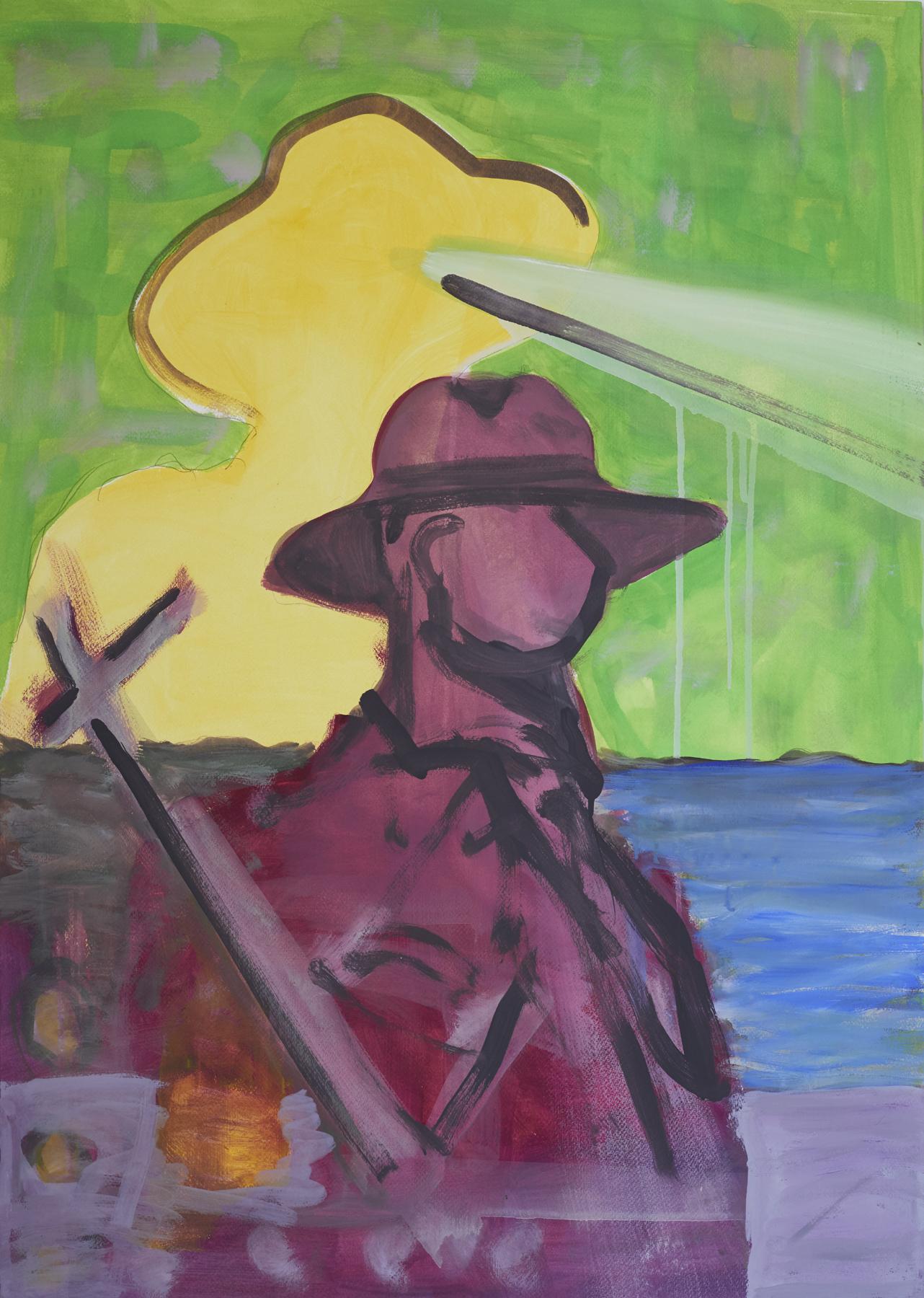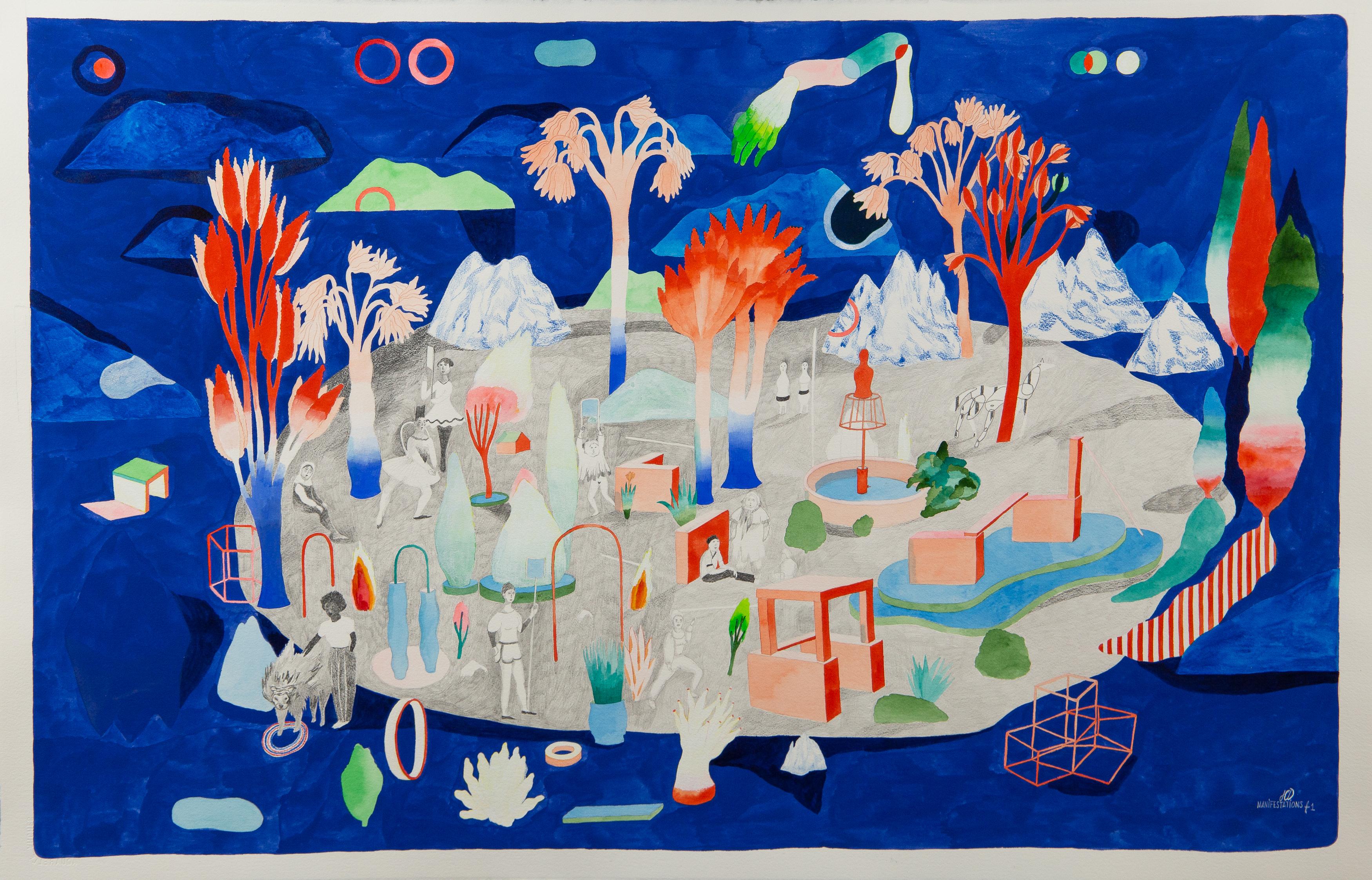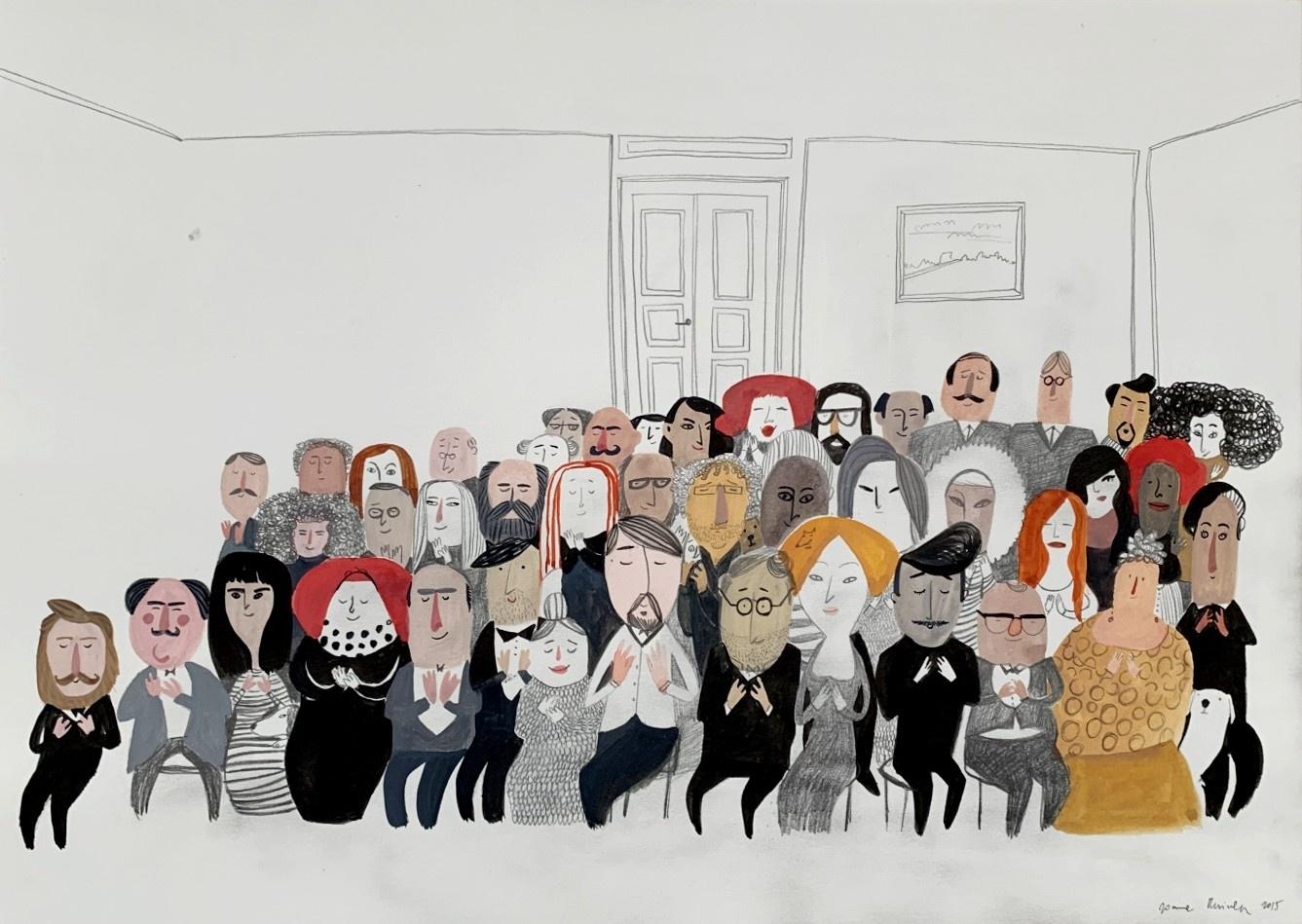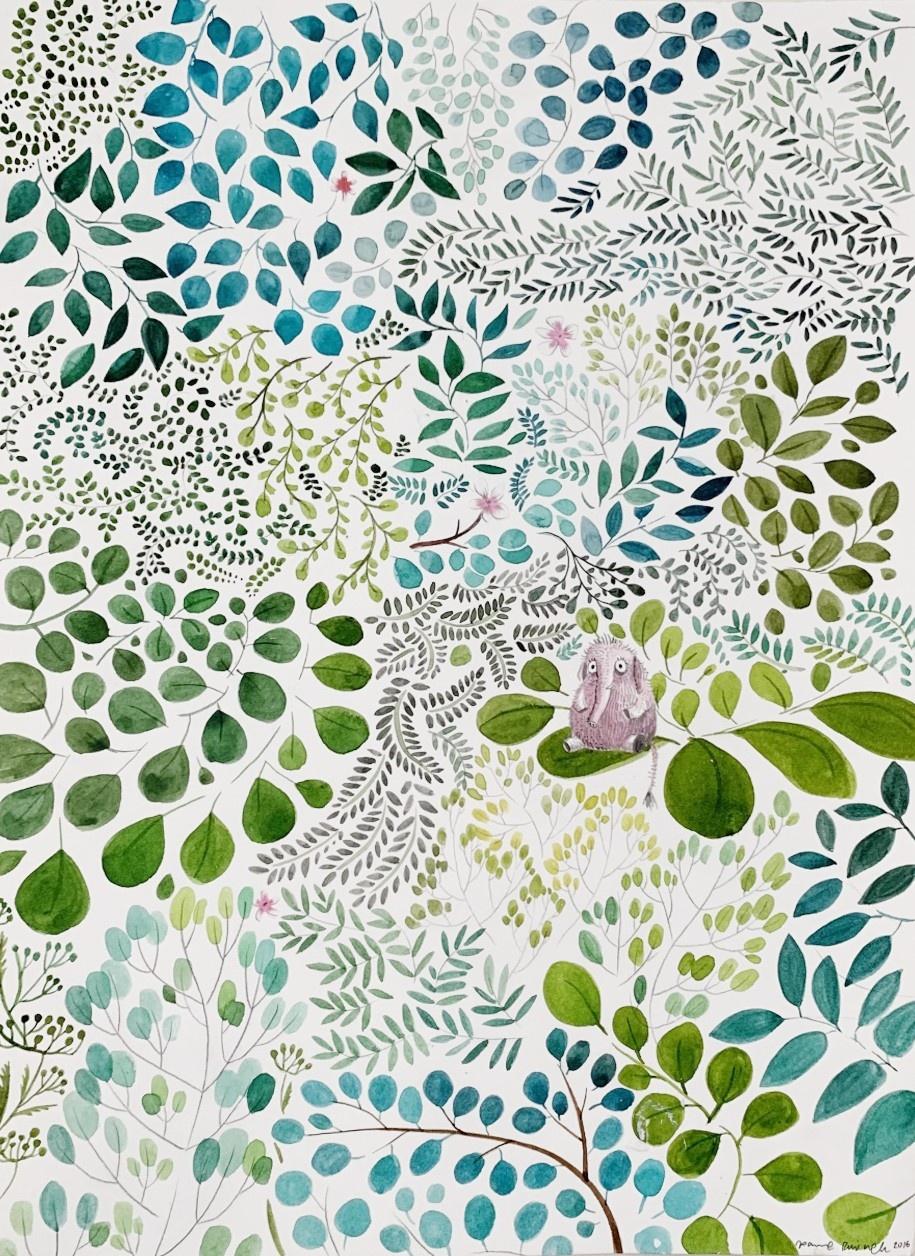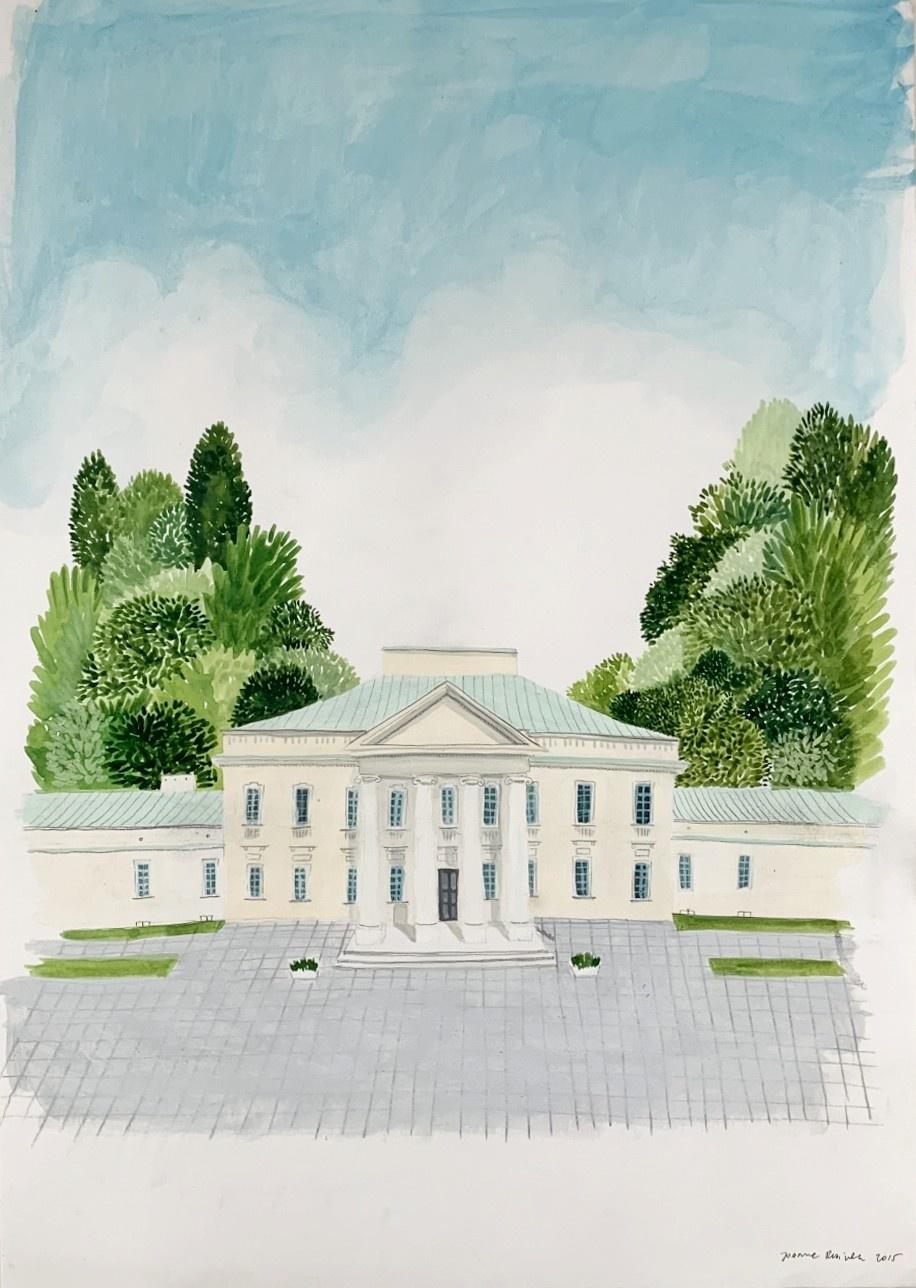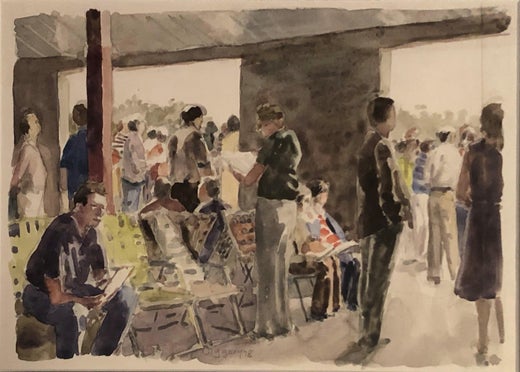Anne DiggoryFive at the Rail, View of Racetrack and Crowd, Saratoga Springs, New Yorkcirca 1978
circa 1978
About the Item
- Creator:Anne Diggory (1951)
- Creation Year:circa 1978
- Dimensions:Height: 12 in (30.48 cm)Width: 12 in (30.48 cm)
- Medium:
- Movement & Style:
- Period:
- Condition:
- Gallery Location:New York, NY
- Reference Number:1stDibs: LU184129908132
Anne Diggory
Anne Diggory was born in 1951. Diggory lives in Saratoga Springs and frequently paints in the Adirondacks and on her travels to places such as Arizona, Alaska and Morocco. She graduated from Yale and has a master of fine arts degree from Indiana University. Diggory has a passion for the landscapes of Hudson River School artists, such as Alexander Helwig Wyant, John Frederick Kensett, William Trost Richards and David Johnson. She was rewarded with a solo exhibition at the Albany Institute of History and Art in April 2019. She exhibits extensively in the New York and New England area. Her work is in numerous private and corporate collections nationwide, including purchases by the Upstate Cancer Center in Syracuse, Phoenix Home Life in Albany, Bessemer Trust in San Francisco and AYCO in Saratoga Springs. Her unique portrayals of the historic Saratoga Racetrack from the late 1970s and 1980s are her most famous works because they focus primarily on the bettors, gamblers, handicappers, spectators, crowds and general atmosphere of the summer horseracing meet, rather than the horses and jockeys.
- ShippingRetrieving quote...Ships From: Larchmont, NY
- Return PolicyA return for this item may be initiated within 3 days of delivery.
- Out of the Sun (Under the Racetrack Grandstand), Saratoga Springs, Anne DiggoryBy Anne DiggoryLocated in New York, NYAnne Diggory (b. 1951) Out of the Sun (Under the Racetrack Grandstand), 1978 Watercolor on paper 7 x 10 inches Signed and dated lower left Provenance: Ac...Category
1970s Contemporary Landscape Drawings and Watercolors
MaterialsPaper, Watercolor, Pencil
- "Sleigh Ride, Winter, " Fletcher Martin, Woodstock, Holiday Scene IllustrationBy Fletcher MartinLocated in New York, NYFletcher Martin (1904 - 1979) Sleigh Ride, Woodstock, New York circa 1955 Watercolor on paper 14 x 11 inches Signed lower right Provenance: James Cox Galler...Category
1950s American Realist Landscape Drawings and Watercolors
MaterialsPaper, Watercolor
- "Medieval Thoughts, Prague, " Alphonse Mucha, Czech Art Nouveau IllustrationBy Alphonse MuchaLocated in New York, NYAlphonse Mucha (Czech, 1860 - 1939) Medieval Thoughts, circa 1890 Wash, ink, and watercolor on paper 11 x 9 inches Signed lower right Provenance: Phillips New York, 19th and 20th ce...Category
1890s Art Nouveau Figurative Drawings and Watercolors
MaterialsWatercolor, Ink, Paper
- "New England Landscape, " James Grabowski, View of Connecticut Hills in the SunLocated in New York, NYJames L. Grabowski (American born 1944) New England Landscape Gouache on paper 27 1/2 x 39 1/2 Signed on the reverse Has a plaque for Arches Paper Award James Grabowski...Category
Late 20th Century Contemporary Landscape Drawings and Watercolors
MaterialsGouache, Paper
- "New York from the Ferry" John Marin, American Modernism Watercolor, CityscapeBy John MarinLocated in New York, NYJohn Marin New York from the Ferry, 1914 Signed and dated lower right Watercolor and graphite on paper 11 x 12 3/4 inches Provenance: An American Place, New York Kennedy Galleries, Inc., New York Christie's, New York, March 16, 1990, Lot 278 Private Collection (acquired from the above) Sotheby's New York, American Paintings, Drawings, & Sculpture, October 2, 2014, Lot 10 A major figure in early twentieth-century modernism, John Marin captured the colliding energies of the American urban scene and the vibrant contrasts of natural elements in the coastal landscape of Maine and other countryside locales. As one of the premier watercolorists of his era, Marin developed a light, spontaneous style ideally suited to conveying the freshness and flux of city and country experience -- his watercolors are often considered to match in strength those created by Winslow Homer in previous century. At the same time, Marin's sensitivity to mass, form, color, and line and their dynamic interchanges provided a precedent for the Abstract Expressionist movement of the late 1950s. Marin was born in Rutherford, New Jersey, to a family of European descent. After studying mechanical drawing and mathematics for half a year at the Stevens Institute of Technology in New York, Marin worked as a draftsman for several architects. It was not until he was almost thirty years old that he began to study art. He enrolled at the Pennsylvania Academy of the Fine Arts in Philadelphia from 1899 to 1901, and at the Art Students League in New York from 1901 to 1903, where his teachers were William Merritt Chase and Frank Vincent Dumond. While Marin was attending the League, the radical ideas of Arthur Wesley Dow were being disseminated and had an impact on the direction Marin would soon take in his art. Marin left for Europe in 1905. The next five years, which he spent abroad, were of tremendous importance to his career. He became a significant figure in the expatriate community in Paris, frequenting the Dôme, a café that served as a meeting place for artists and writers. While in Europe, Marin visited the Louvre and the Rijksmuseum in Amsterdam and, despite his claims that he had been indifferent to the Paris art world, he undoubtedly became aware of the art of Paul Cézanne and Henri Matisse. The works Marin created in Europe most strongly reflect the influence of James McNeill Whistler, especially the pastels he rendered in Venice. In the summer of 1909, Marin met Alfred Stieglitz in Paris. In February of the next year, Marin's work was shown along with that of Alfred Maurer at Stieglitz's gallery, 291. After returning to America in the following year, Marin became one of the most consistent members of Stieglitz's inner circle, showing at all three of his galleries -- 291, The Intimate Gallery, and An American Place. After 1910, Marin developed the routine that he would follow for the rest of his life, creating paintings, drawings, and prints in New York City and surrounding areas during the winter, and in the summer, traveling to the country, where he focused on the particular characteristics of the regions that he visited. He worked mainly in watercolor until 1928, when he began also to use oil. Marin never became purely abstract. He formulated a unique style melding influences of the art of the French Fauves, Cézanne, Matisse, and the French Cubists with a personal style of luminescent colors, agile brushwork, and a simultaneously delicate and strong handling. In city views, he used broken lines, a light touch, fluid color, and rhythmic compositions to convey what he described as the "great forces at work." He expressed the warring of the great and the small through relationships between masses. As he said, he sought to express the "pull forces" of the modern urban scene. Often portraying the new tall buildings of New York seen...Category
1910s American Modern Landscape Drawings and Watercolors
MaterialsPaper, Watercolor
- "Monhegan Island, Maine, " Edward Dufner, American Impressionism Landscape ViewBy Edward DufnerLocated in New York, NYEdward Dufner (1872 - 1957) Monhegan Island, Maine Watercolor on paper Sight 16 x 20 inches Signed lower right With a long-time career as an art teacher and painter of both 'light' and 'dark', Edward Dufner was one of the first students of the Buffalo Fine Arts Academy to earn an Albright Scholarship to study painting in New York. In Buffalo, he had exchanged odd job work for drawing lessons from architect Charles Sumner. He also earned money as an illustrator of a German-language newspaper, and in 1890 took lessons from George Bridgman at the Buffalo Fine Arts Academy. In 1893, using his scholarship, Dufner moved to Manhattan and enrolled at the Art Students League where he studied with Henry Siddons Mowbray, figure painter and muralist. He also did illustration work for Life, Harper's and Scribner's magazines. Five years later, in 1898, Dufner went to Paris where he studied at the Academy Julian with Jean-Paul Laurens and privately with James McNeill Whistler. Verification of this relationship, which has been debated by art scholars, comes from researcher Nancy Turk who located at the Smithsonian Institution two 1927 interviews given by Dufner. Turk wrote that Dufner "talks in detail about Whistler, about how he prepared his canvasas and about numerous pieces he painted. . . A great read, the interview puts to bed" the ongoing confusion about whether or not he studied with Whistler. During his time in France, Dufner summered in the south at Le Pouleu with artists Richard Emil Miller...Category
Early 20th Century American Impressionist Landscape Drawings and Waterco...
MaterialsPaper, Watercolor
- Swiss Contemporary Art by Olivier Furter - Mensch IIILocated in Paris, IDFGouache on paper - Framed 102 x 72 x 3 cmCategory
2010s Contemporary Figurative Drawings and Watercolors
MaterialsPaper, Gouache
- Disappearances / Extinctions #1 Hélène Duclos 21st Century drawing landscape artBy Hélène DuclosLocated in Paris, FRThis drawing is part of the current exhibition entitled "The fantastic story of the liquid mountain" at Claire Corcia Gallery in Paris. The liquid mountain is populated by living be...Category
2010s Contemporary Landscape Drawings and Watercolors
MaterialsColor Pencil, Graphite, Paper, Gouache
- Demonstration #1 Hélène Duclos, 21st Century, Contemporary figurative art blueBy Hélène DuclosLocated in Paris, FRGouache, coloured pencil and graphite on paper Signed lower right Unique work 1 / Hélène DUCLOS, 2016 – Artist Statement “Questioning the human condition and the position of being ...Category
21st Century and Contemporary Contemporary Figurative Drawings and Water...
MaterialsGouache, Paper
- Who needs a mammoth - Book illustration, Polish artist, Watercolor paintingBy Joanna RusinekLocated in Warsaw, PLIllustration for book by Agnieszka Frączek 'Who needs a mammoth' JOANNA RUSINEK Printmaker, illustrator of children's books, author of press ill...Category
2010s Contemporary Figurative Drawings and Watercolors
MaterialsPaper, Watercolor, Pencil
- Belvedere for children - Book illustration, Polish artist, Watercolor paintingBy Joanna RusinekLocated in Warsaw, PLIllustration for book by Michał Rusinek 'Belvedere for children' JOANNA RUSINEK Printmaker, illustrator of children's books, author of press ill...Category
2010s Contemporary Figurative Drawings and Watercolors
MaterialsPaper, Watercolor
- Stenka's songs - Book illustration, Polish artist, Watercolor paintingBy Joanna RusinekLocated in Warsaw, PLIllustration for book by Barbara Stenka 'Stenka's songs' JOANNA RUSINEK Printmaker, illustrator of children's books, author of press illustratio...Category
2010s Contemporary Figurative Drawings and Watercolors
MaterialsPaper, Watercolor, Pencil
